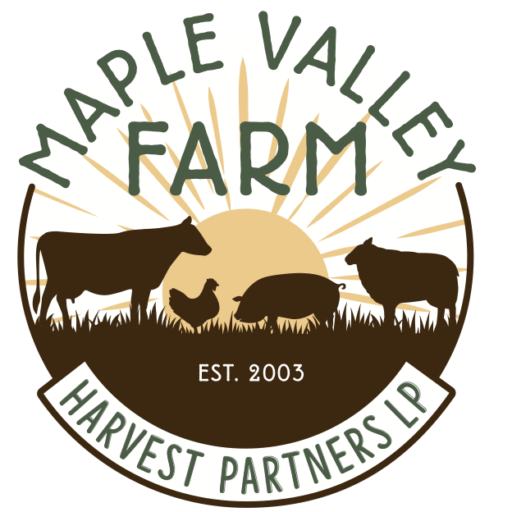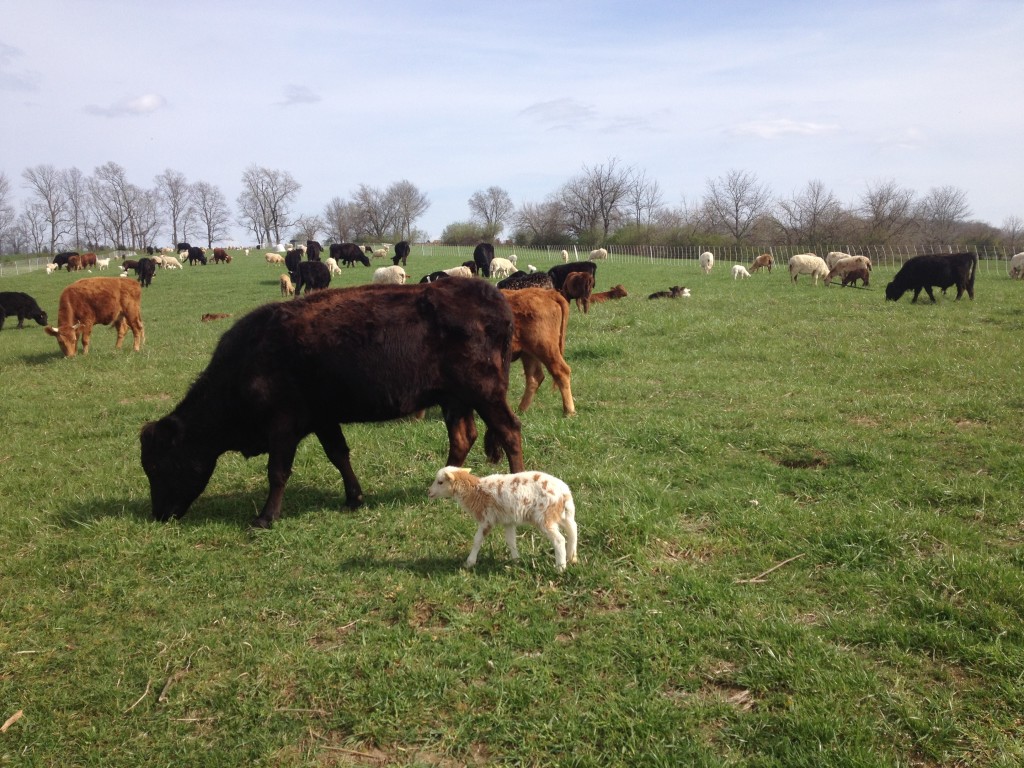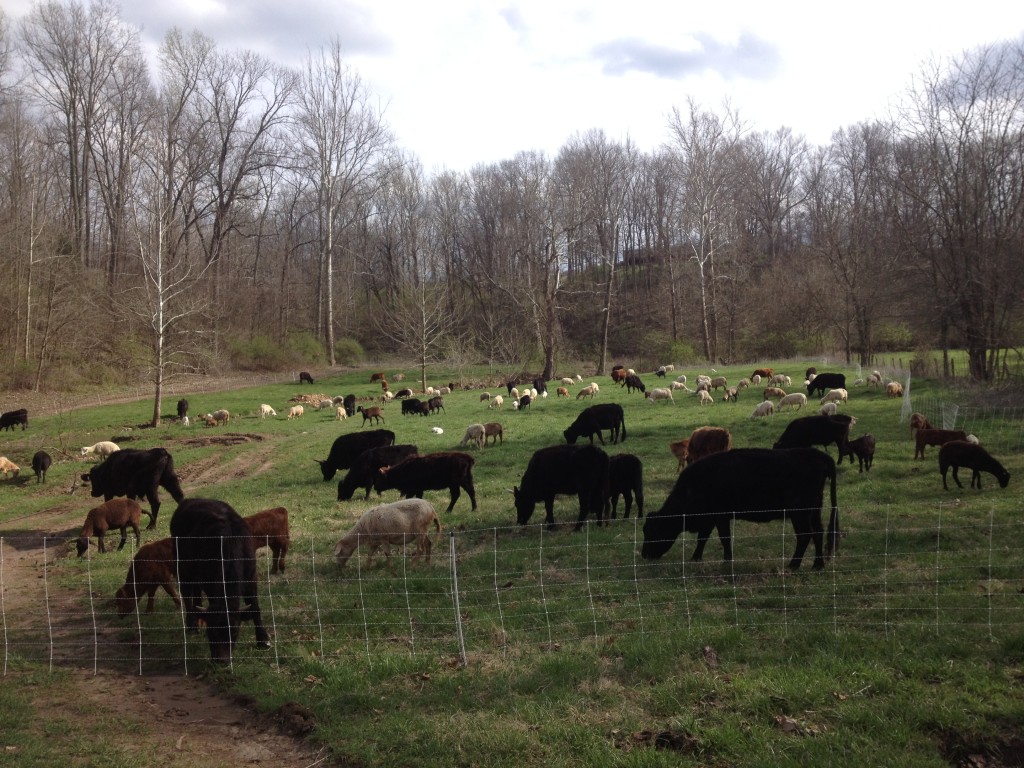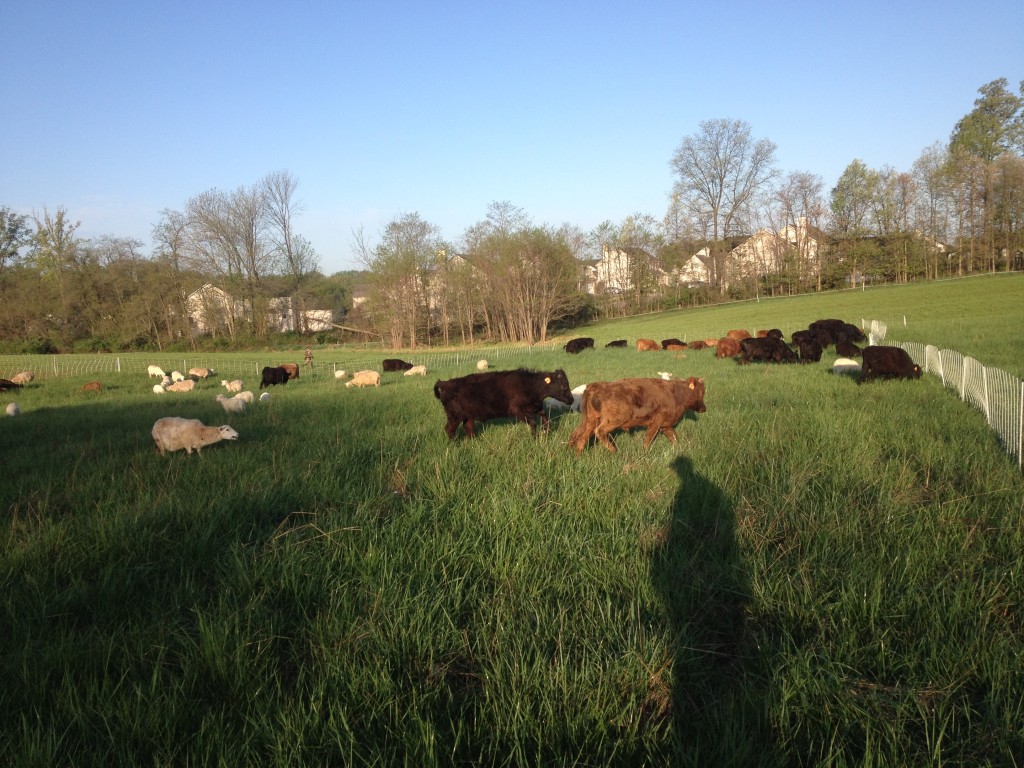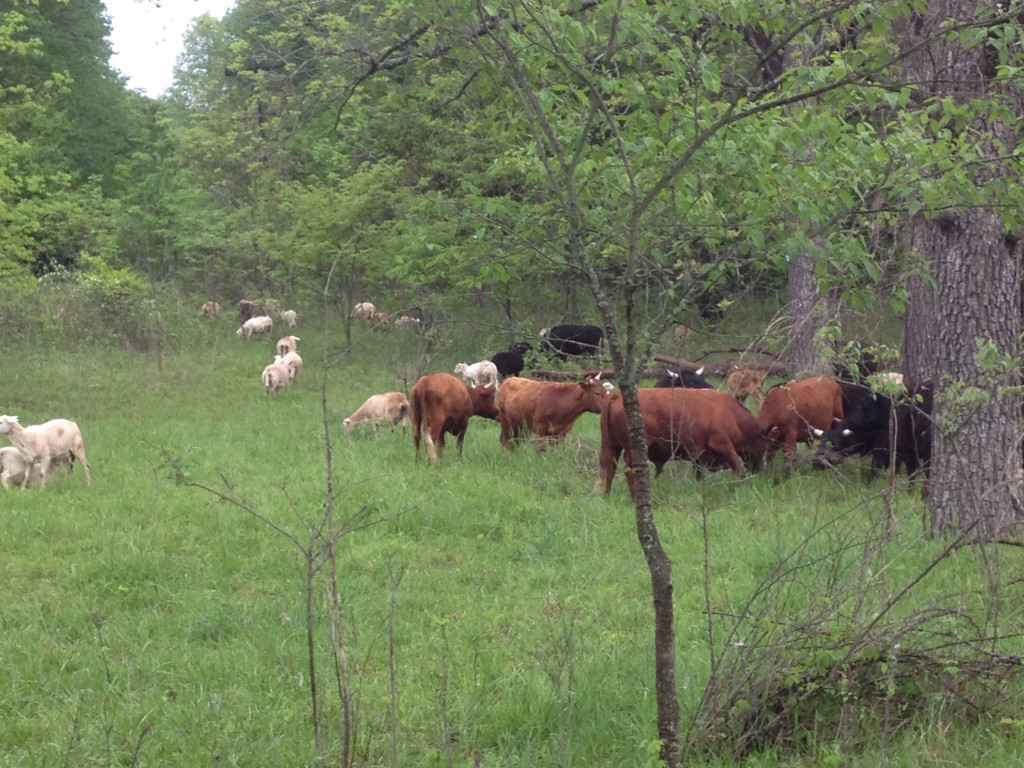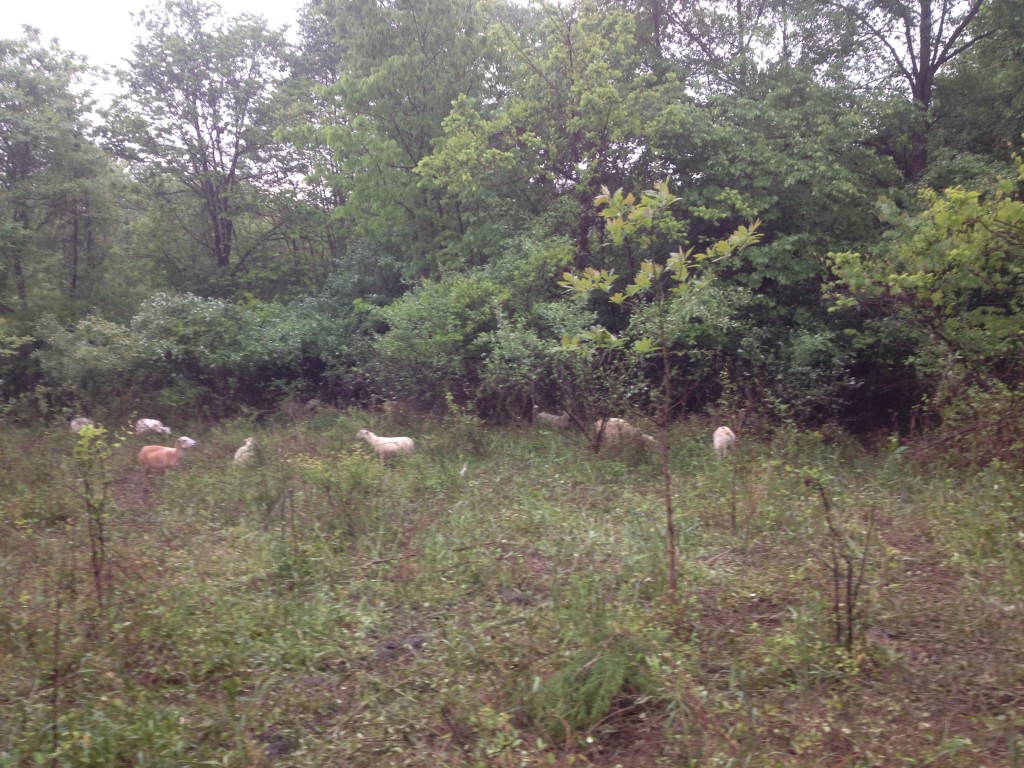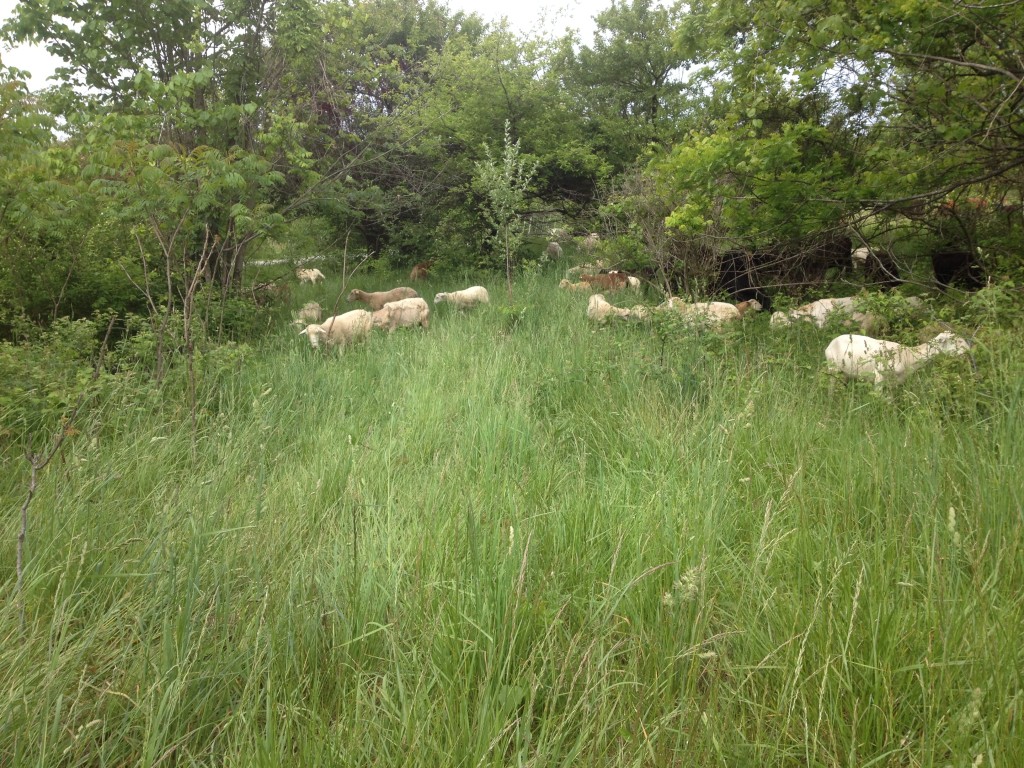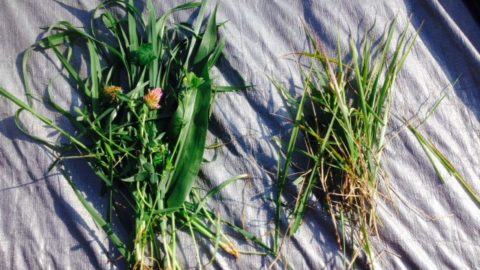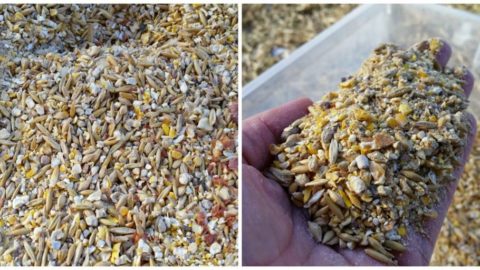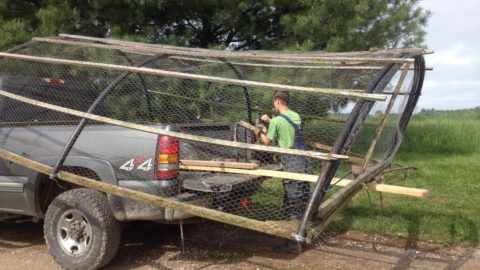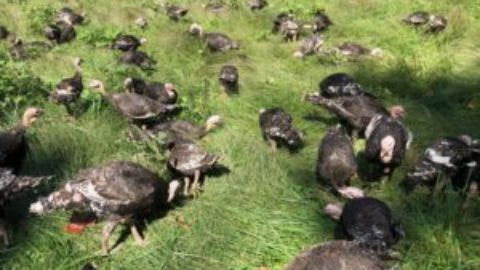Note: Pictures at bottom of this post!
What a spring season it has been! We knew we’d be short on winter grazing due to drought conditions last summer. Nonetheless, we didn’t want to keep the animals on hay any longer than necessary so we opted to move them to spring grass early in hopes that we’d get enough recovery to keep right on grazing. Fortunately, the rains have been very gentle yet plentiful so far. Unfortunately, the combination of shallow rooting from last spring’s continuous rains, and the hard ground from last summer’s drought, along with our early grazing, left the grass slow to recover. We’ve been moving the animals really “fast” right up to recently. “Fast” means that we still move them just once a day, but we have to cover more ground in that day, meaning larger paddocks. Larger paddocks, in turn, means longer set up times, using the pastures on our farm more quickly and having to transport the animals to fresh pasture at other places.
So far, we’ve covered all of Maple Valley Farm almost twice, the Gallman nature preserve almost twice, the Smith woods once, the York pasture once, the Martindale farm once and the Lost Man’s Lane pasture once. We’ve also worked out an agreement with the Dunn family for several acres of pasture and woods just down the road that we hope to use in the fall and winter this season. We’ve also been invited to graze about some acres at the Cottingham’s across the street from the Martindale farm. All of this means:
— a lot of coordination and communication with our existing partnering land owners
— setting up fencing and water line on other properties (and sometimes, moving it from property to property)
— moving over a hundred and fifty head of livestock in a 14 foot trailer three separate times so far (loading the animals without holding pens, gates and equipment for 6 trips each time)
— making new partnership deals and arrangements with land owners (this year the York, Lost Man’s Lane, Dunn Family and Cottingham’s properties are new )
It’s been rewarding to work out new options with landowners and to see our team of animal handlers (our family) rise to the challenges of moving this many animals.
Another highlight of this season’s grazing is that we are working really hard to include wooded areas in the animals’ grazing paddocks. We believe the increased variety of forages will provide better shade and some of the energy (waxes and resins,) fats and secondary metabolites the animals need to maintain optimal health and nutrition. We’ve already seen a big improvement in the goats’ feet and the body condition and hair coats of all the animals. Using the woods requires expeditious planning and more work to create breaks through which our temporary fences can be installed but we believe it will be worth it.
Here are some pictures of grazing through the spring:
